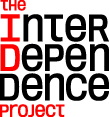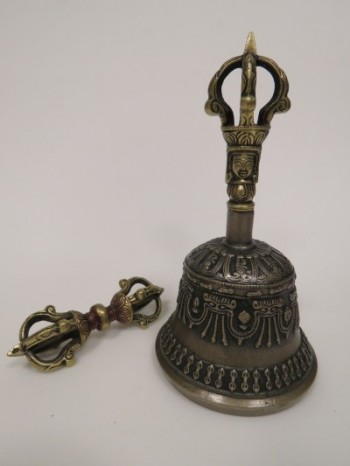
Theme: Compassion
About the Meditation
Meditation session led by Sharon Salzberg.
The guided meditation begins at 14:30.
For centuries Himalayan practitioners have used meditation to quiet the mind, open the heart, calm the nervous system, and increase focus. Now Western scientists, business leaders, and the secular world have embraced meditation as a vital tool for brain health.
Whether you’re a beginner, a dabbler, or a skilled meditator seeking the company of others, join expert teachers in a forty-five-minute weekly program designed to fit into your lunch break. Each session will be inspired by a different work of art from the Rubin Museum’s collection and will include an opening talk, a twenty-minute meditation session, and a closing discussion.
This program is supported with thanks to our presenting partners Sharon Salzberg, the Interdependence Project and Parabola Magazine.


Related Artwork

The vajra and bell are the most important ritual objects of Tibetan Buddhism. Most every lama has a pair and knows how to use them. They represent “method” (vajra) and “wisdom” (bell). Combined together they symbolize enlightenment as they embody the union of all dualities: bliss and emptiness, compassion and wisdom, appearance and reality, conventional truth and ultimate truth, and male and female, etc.
Most vajras have five prongs that symbolize the five wisdoms that are attained through the transcendence of five kleshas (greed, anger, delusion, pride and envy). The hub between them signifies emptiness.
This Vajra and Bell has eight prongs plus the central hub. Vajra is a Sanskrit word; in Tibetan it is called a dorje. It is related to the word for diamond, and appears to be similar to the thunderbolt weapon carried by the Vedic god Indra and the Olympian Zeus. As a thunderbolt weapon it destroys both internal and external enemies. As a diamond it symbolizes the indestructible and all-penetrating mind of enlightenment.
There are many different explanations of the symbolic meanings of the vajra and bell. The meanings can vary depending on the different tantra literature or cycle of Tantric practice. A general explanation describes the five pronged vajra scepter as representing twenty-eight deities and the bell representing twenty-three deities.
About the Speaker

Sharon Salzberg, cofounder of the Insight Meditation Society in Barre, Massachusetts, has guided meditation retreats worldwide since 1974. Sharon’s latest book is Real Love: The Art of Mindful Connection. She is a weekly columnist for On Being, a regular contributor to the Huffington Post, and the author of several other books including the New York Times bestseller Real Happiness: The Power of Meditation, Faith: Trusting Your Own Deepest Experience, and Lovingkindness: The Revolutionary Art of Happiness. Sharon has been a regular participant in many onstage conversations at the Rubin.
